If you run a service business and want organic growth without babysitting an agency, you are not alone. B2B SEO for service companies can feel slow and squishy, yet it is one of the few channels that keeps paying after the ad spend stops. I approach it in two speeds: stack quick, measurable wins early, then build compounding assets that move pipeline, not just pageviews. What follows is how I create clarity, preserve ownership of results, and connect rankings to revenue.
SEO quick wins for service businesses: my 30/60/90 sprint
Day 0 to 30: baseline and fast impacts
- Titles and metas with intent modifiers. I refresh the top 25 pages using terms like services, agency, consulting, pricing, for [industry], vs, best, RFP. Target outcome: +2 to 4 percentage points CTR on those pages.
- Refresh legacy winners. I update the top 10 posts by traffic with new data, sharper hooks, and stronger intros. Target outcome: +20 to 30% more organic sessions from those URLs within 45 days.
- Internal link sculpting. I add links from the highest authority pages to bottom-of-funnel (BOFU) pages with clear anchors. Target outcome: 5 to 10 BOFU terms move from page 2 to page 1.
- Indexation fixes. I clean sitemaps, remove thin or duplicate URLs, and correct canonicals. Target outcome: fewer coverage errors and more crawl budget on money pages.
- FAQ content and schema, used judiciously. I add 3 to 5 crisp Q&A blocks that match common objections. Note: Google has limited FAQ rich results display since 2023; I still use Q&A for user clarity and potential eligibility. Target outcome: stronger on-page clarity and occasional richer results.
- Featured snippets. I add 40 to 55-word answer boxes at the top of posts that match explicit questions. Target outcome: 5 new snippets in 30 days (eligibility depends on query and site trust).
Day 31 to 60: build momentum
- CRO quick paths. I add proof bars, sticky CTAs, and skim-friendly TL;DRs on service and comparison pages. Target outcome: +15 to 25% form completion on existing traffic.
- BOFU content sprint. I publish 6 to 8 high-intent pages (pricing, implementation, and industry landers). Target outcome: pipeline lift from buyers already shopping.
- Speed fixes on key templates. I improve Core Web Vitals on home, service, and blog posts (optimize images, trim CSS/JS). Note: INP replaced FID as a Core Web Vital in 2024 - optimize for it. Target outcome: pass CWV for 80% of key URLs.
Day 61 to 90: compounding and scale
- Topic cluster launch. I ship one core service hub with 6 to 10 supporting articles. Target outcome: multiple page-1 entries around one service theme.
- PR-style links. I pitch one small data study or practical resource to podcasts and niche sites. Target outcome: 8 to 12 referring domains with real traffic and relevance.
- Governance cadence. I run a weekly SEO working session and a monthly exec recap with KPIs tied to pipeline. Target outcome: no drift, clear ownership.
Mini case snapshots
- Title refresh, faster wins. A professional services firm updated 22 titles with industry modifiers. CTR rose from 2.3% to 4.4% in 6 weeks. Same rankings, double the clicks.
- Internal links, big lift. A consulting company added 120 internal links to 6 BOFU pages. Five keywords jumped from positions 11 to 6 in 30 days, and those pages added 17 MQLs.
- FAQ clarity, richer results. A solutions provider added Q&A to 8 service pages. Impressions rose 31%, and calls increased 12% in 45 days.
Targets are directional and depend on baseline, competition, and product-market fit. I watch Search Console, analytics, and form data weekly to separate signal from noise.
A realistic SEO timeline
SEO is not instant - but it should not feel endless either. Here is a timeline that matches typical service sales cycles and what I expect to see when the work ships consistently.
- 0 to 30 days
- Baseline, technical cleanup, metadata refresh.
- Small gains in CTR and faster crawling.
- Early movement from page 2 to page 1 for lower-competition terms.
- 30 to 90 days
- First wave of rankings for BOFU terms and industry pages.
- More qualified demo requests and form fills from comparison and pricing pages.
- Expect 10 to 20% organic session growth if you publish 6 to 10 quality pages per month and earn 6 to 10 relevant links.
- 3 to 6 months
- Compounding traffic from one or two topic clusters.
- 20 to 40% organic growth is common for service sites that maintain 8 to 12 pages per month and 8 to 12 links per month with sound technical health.
- Material increase in sales-qualified leads from organic.
- 6 to 12 months
- Category leadership signals: multiple page-1 placements on core services, rising brand searches, mentions in niche media.
- Organic becomes a steady pipeline input that reduces paid reliance.
Dependencies that shift timelines: domain age and authority (newer domains move slower), sales cycle length (longer cycles delay revenue recognition even when leads rise), content and link cadence, and SERP features or AI overviews that can change click patterns - so copy needs crisp answers and strong title hooks.
Strategy that maps to buyers and revenue
I anchor the plan to who buys, how they decide, and what proves value. Sequence matters.
Goals you can measure
- Pipeline targets, not just traffic.
- Average contract value and close rates by segment.
- CAC payback guardrails and gross margin.
ICP and buying committee
- Segment by industry, company size, and use case.
- Build message tracks for users, managers, and exec sponsors. Each role needs different proof.
Sequencing that converts
- BOFU first: service, pricing, comparison, implementation, and case study pages that attract buyers with budget and urgency.
- Then MOFU: problem pages, templates, frameworks, and playbooks that build trust.
- Then TOFU: broader thought leadership that earns links and mindshare.
Topic clusters and internal link architecture
- Pick one core service theme. Create a hub page with 6 to 15 related articles, each targeting a clear intent. Link them in a simple, shallow structure.
- Add internal links from PR hits and high-authority posts back to BOFU targets.
- Keep BOFU pages within two to three clicks of the homepage and link to them contextually with descriptive anchors.
Keyword research that reflects deals, not vanity
Volume is nice. Value is better. I build a list that mirrors won deals, not just search tools.
Start with your data
- Search Console: low-position, high-impression queries that match services are easy wins.
- CRM and closed-won notes: phrases in proposals, SOWs, and contracts reveal "money language."
- Sales call transcripts: pull terms from discovery and objection moments.
- Competitor gaps: find terms they rank for where you can ship a better page with clearer proof.
High-intent modifiers and business value
- Modifiers: for [industry], services, agency, consulting, pricing, cost, vs, comparison, RFP, implementation, onboarding, audit, quick wins.
- Score by business value: ICP fit, ACV potential, urgency signals, and SERP difficulty.
- Mark which keywords deserve BOFU pages vs. support content. Keep the list tight - fifty great terms beat five hundred loose ones.
A 90-day content calendar
- Weeks 1 to 4: BOFU core pages (pricing, service hubs, industry pages, and 2 to 3 comparisons).
- Weeks 5 to 8: MOFU guides tied to objections and evaluation criteria.
- Weeks 9 to 12: Fill gaps from Search Console and add FAQ updates to early pages.
Bottom-of-funnel pages that convert
Buyers at the bottom want clarity, not fluff. I make these pages the backbone of B2B SEO for service companies.
- Key page types: comparisons against common alternatives, industry landing pages, transparent pricing and packaging (with ranges and cost drivers), case studies with numbers (before/after metrics, timelines, team roles), implementation and onboarding guides, RFP resources, and simple ROI calculators with a clear method section.
- Conversion elements that matter: proof bars with logos, ratings, and short wins; sticky CTAs that do not interrupt reading; review or testimonial schema where eligible and compliant; short FAQs answering price, timeline, and risk.
A note on pricing transparency: if you worry that sharing pricing will scare buyers, it sometimes does. It also filters poor fits and attracts those who are ready. The net gain in quality is usually worth it.
Technical SEO that moves revenue
Technical work should not drown you in jargon. I tie fixes to business impact and sequence them by effort.
- Crawlability and indexation: sensible robots rules, accurate canonicals, fresh XML sitemaps; remove thin, tag, and parameter clutter; sample server logs to confirm Googlebot reaches BOFU pages often.
- Core Web Vitals and speed: focus on revenue-driving templates (home, service, blog, pricing); lazy-load images, compress assets, and trim render-blocking scripts; optimize for INP, LCP, and CLS.
- Structured data coverage: Organization, Website, Service, Article or BlogPosting, and Review where it fits. Follow Google's guidelines - self-serving review markup is not eligible for rich results.
- Faceted navigation and filters: noindex dead-end combinations while preserving indexable landing pages that match real demand.
- International signals: if you target multiple regions, use hreflang and region-specific content.
- CMS guardrails: templates that lock in H1, title, meta, and schema patterns; publishing checks that block thin pages from going live.
- Executive scorecard: categorize fixes by business impact and effort; forecast traffic and lead lift from each fix so leaders can prioritize.
Links that earn relevance and visits
I pursue links that bring topical relevance and real visits. Volume helps; quality and context win the long game.
- What to pursue: digital PR with data (small studies or proprietary insights), partner and customer co-marketing, vetted industry directories that send traffic, guest insights for niche publications and community newsletters, conference or speaker pages and talk recaps, and community roundups or predictions pieces.
- Pace and anchors: match the link velocity of the SERPs you want to enter; keep anchors natural - brand, naked URLs, and soft service variations.
- Internal routing: from every PR hit, link to the most relevant BOFU page, not just the homepage. That pushes authority straight to revenue pages.
Domain metrics can blind you. Relevance, topical match, and real clicks usually predict outcomes better than a single score.
Modeling ROI and attribution executives trust
Leaders do not want vanity metrics. I tie B2B SEO for service companies to money with a clear model and clean tracking.
- Simple model: Organic sessions × MQL rate = MQLs; MQLs × SQL rate = SQLs; SQLs × close rate = customers; customers × ACV = new revenue; add LTV and gross margin to extend the horizon; SEO cost includes content, links, tools, and team time.
- Example inputs and outputs: Content pace of 10 posts or pages per month including 4 BOFU pages; 4 to 8 relevant new referring domains per month; baseline 10,000 organic sessions/month, 1.5% MQL rate, 35% SQL rate, 25% close rate, $30,000 ACV, 70% gross margin; after 6 months, 13,000 sessions and a 2.0% MQL rate driven by BOFU pages, same downstream conversion rates. Output in a representative month at month six: 260 MQLs → 91 SQLs → 23 customers. At $30,000 ACV, that is $690,000 in new annual contract value influenced by organic. Cost side might be $14,000 to $20,000 per month depending on scope - drop those into CAC, payback, and ROI formulas.
- Attribution and reporting cadence: use analytics for sessions and landing pages, connect CRM for first-touch, last-touch, and multi-touch (keep the views separate; each tells a different truth), track phone calls on BOFU pages, and maintain two views - weekly working detail (page-level metrics, BOFU rankings, technical health) and a monthly executive roll-up (MQLs, SQLs, revenue influenced, CAC payback, ROI) with one slide on what shipped, one on what moved, and one on what is next.
Final thought: SEO can feel slow and yet show motion next week. It can seem complex and still be simple to steer when you track the right numbers. B2B SEO for service companies works best when I start with bottom-of-funnel clarity, fix what blocks crawling, and ship focused content every week. Do that, and the compounding effect takes care of the rest.

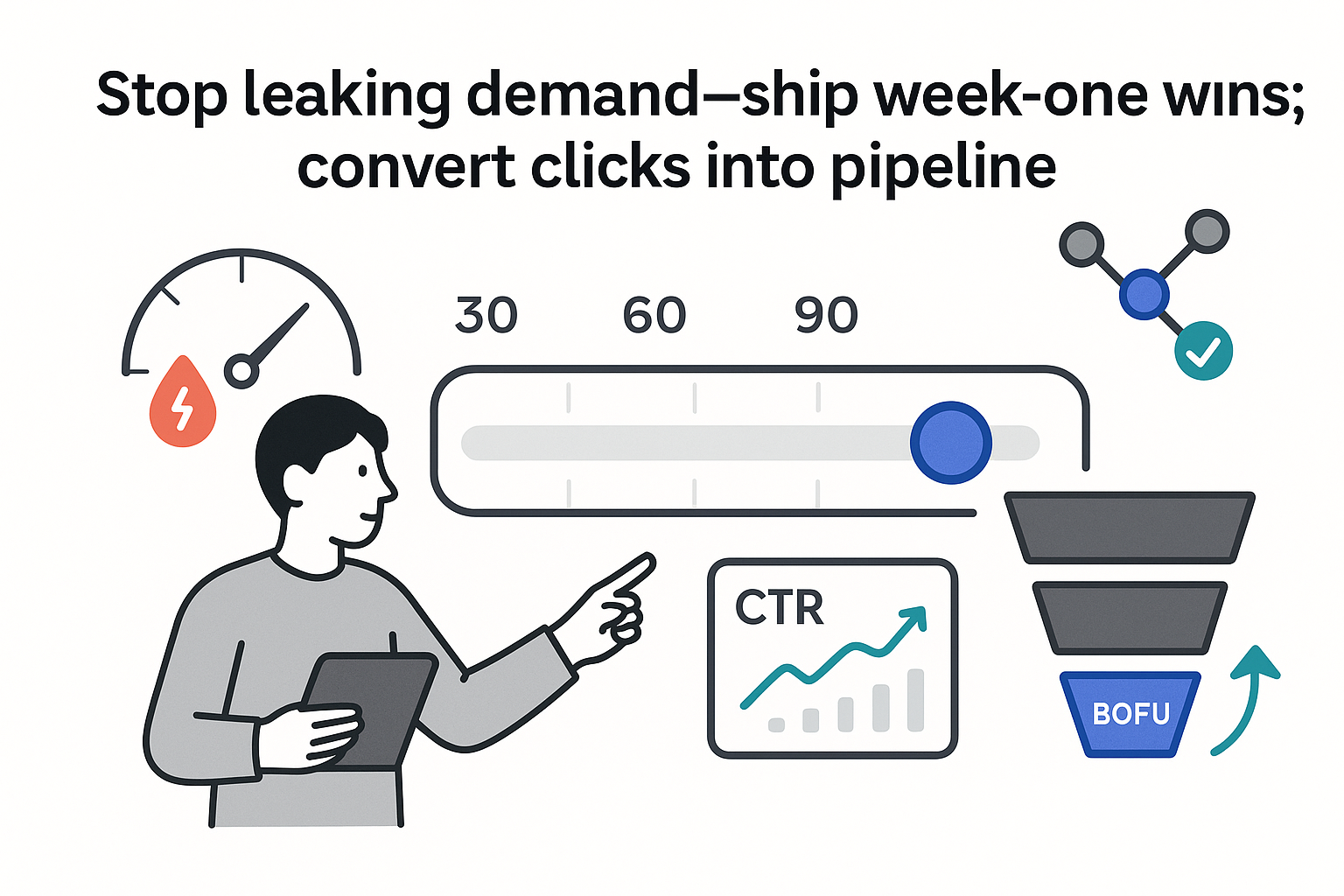

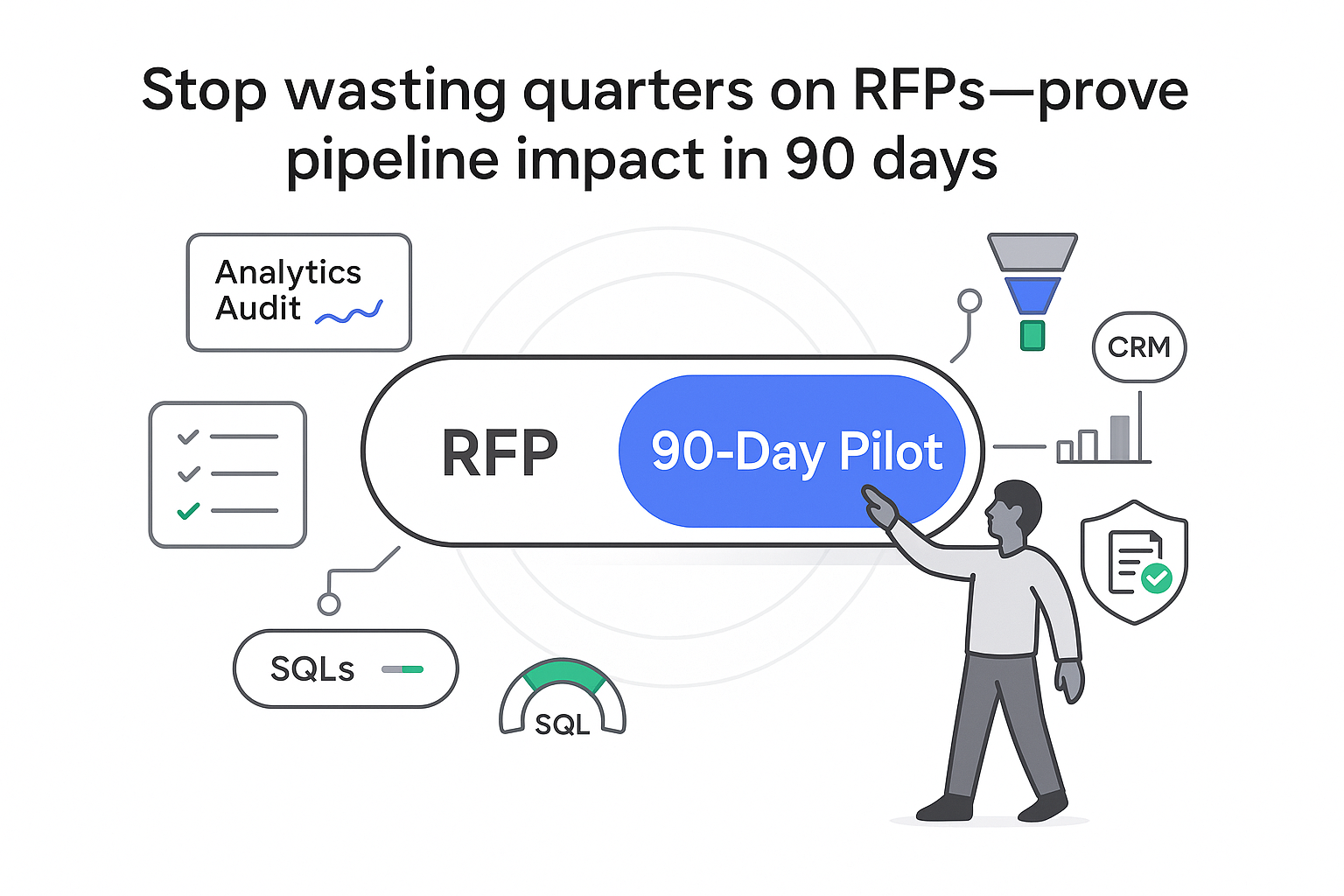
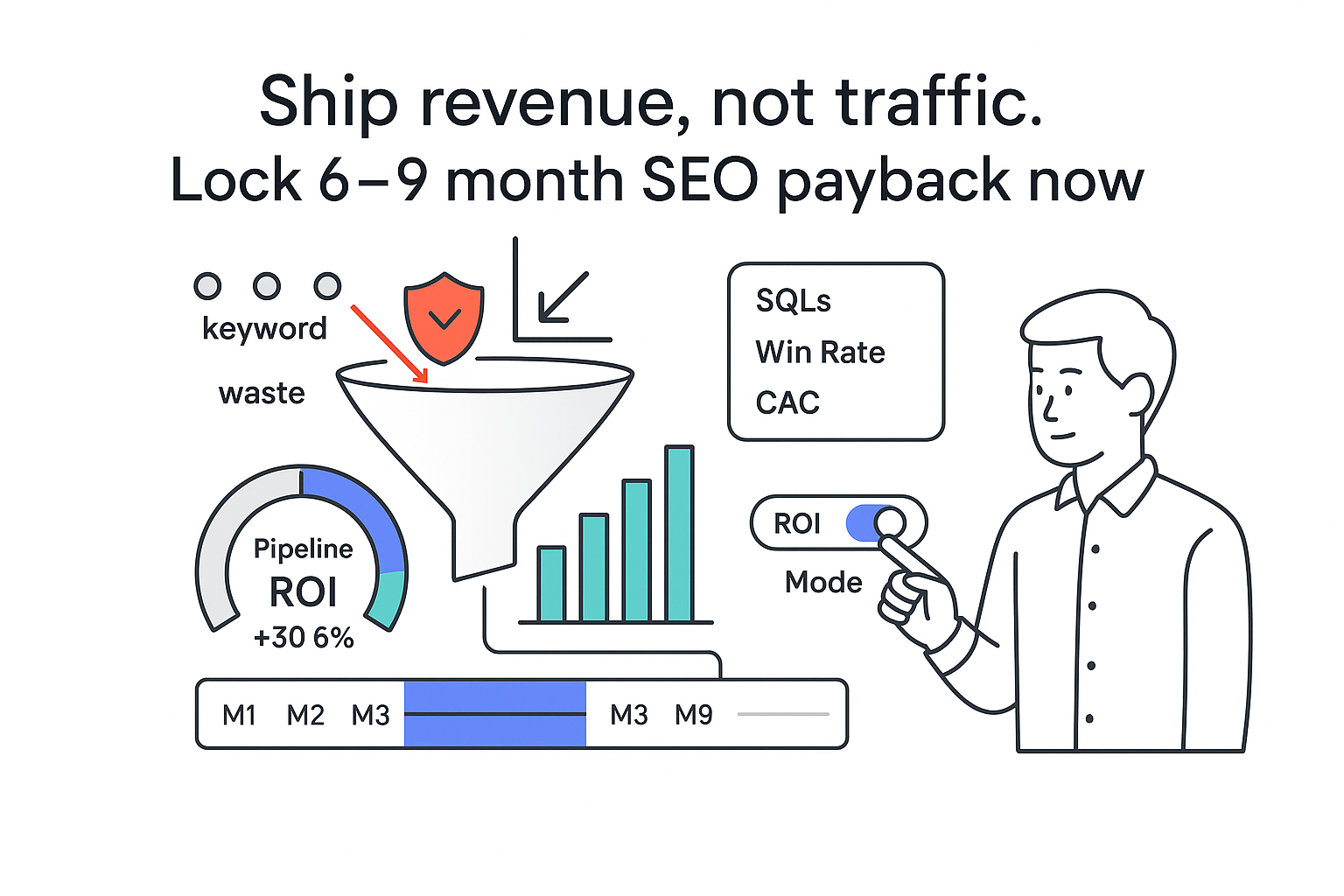
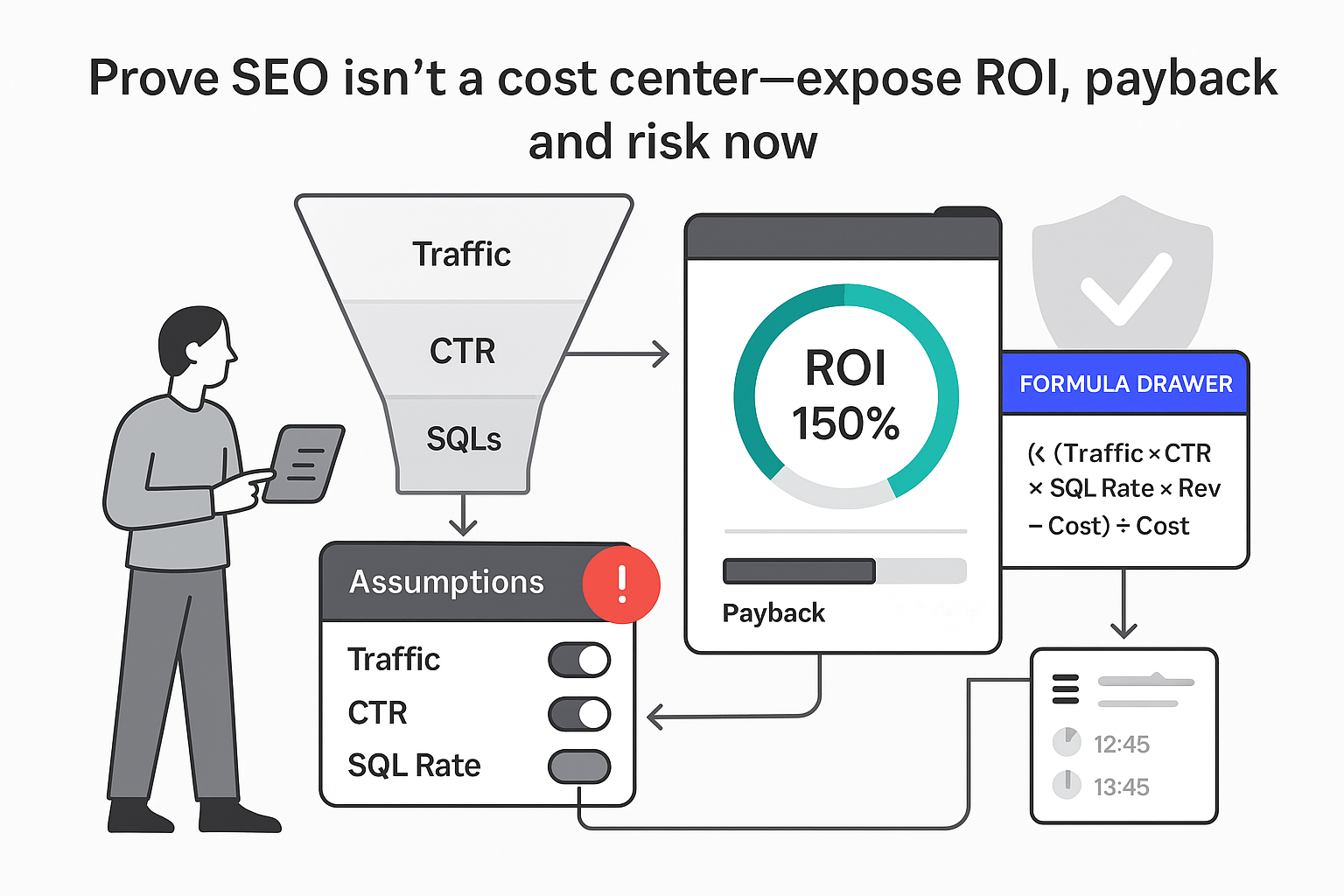
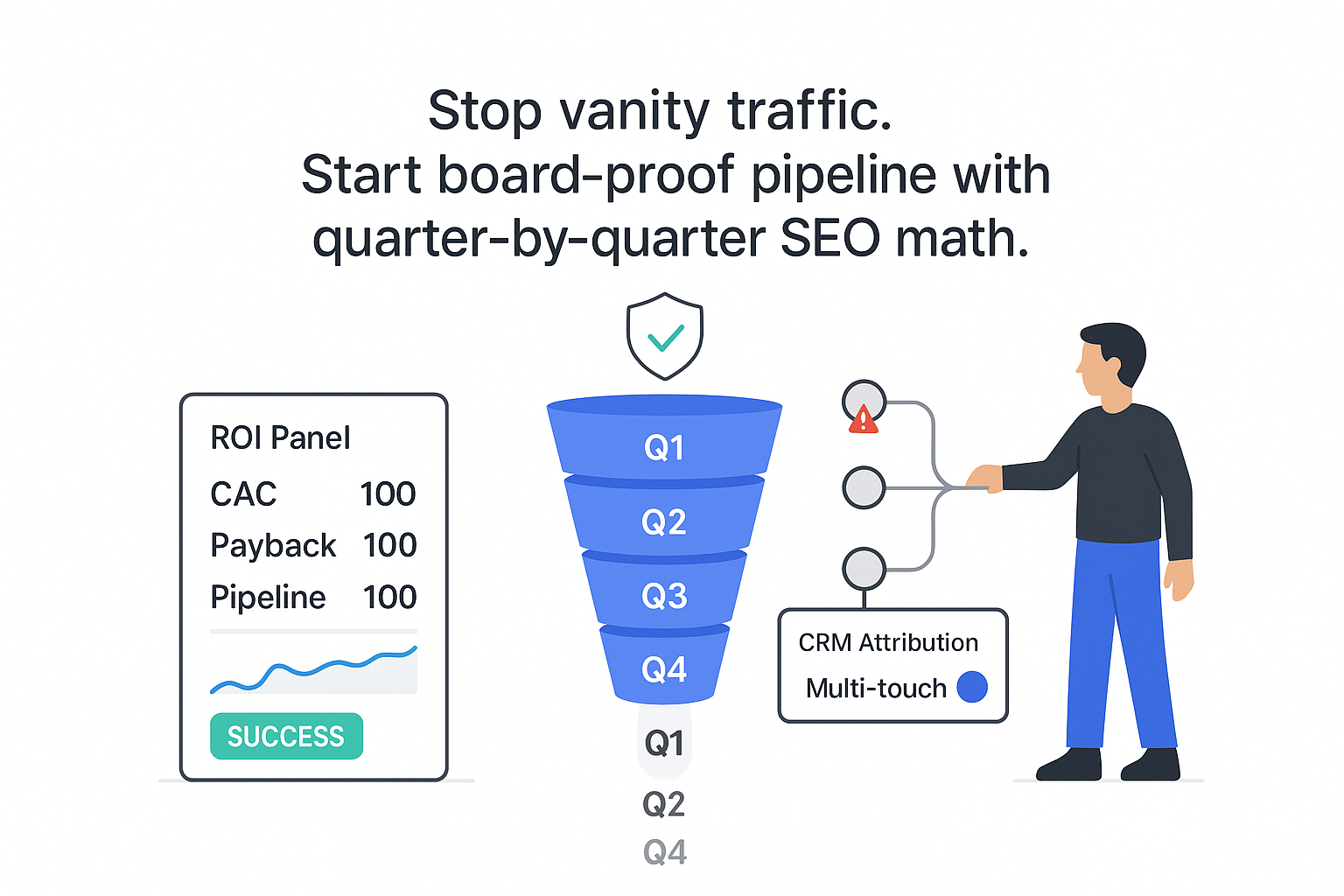
.svg)